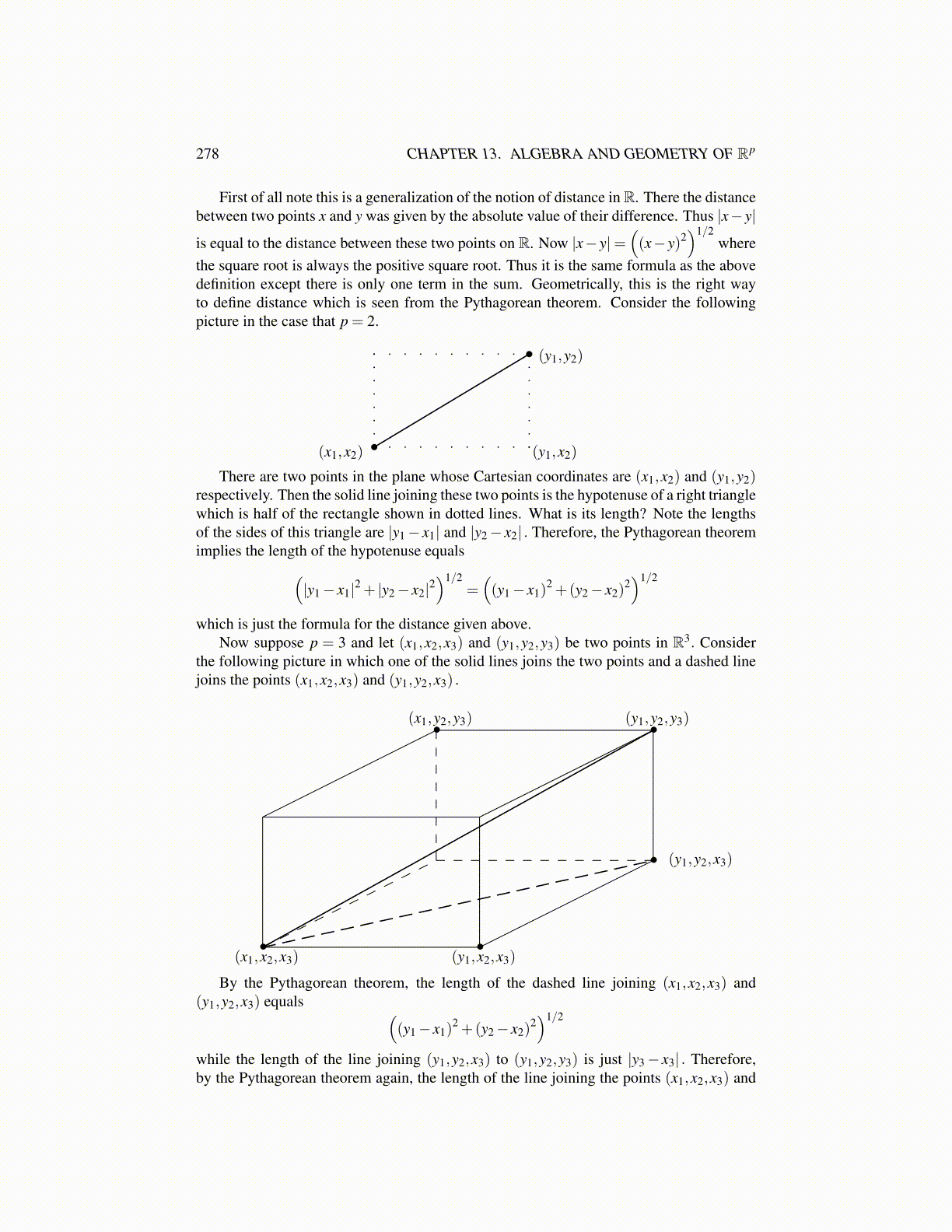
278 CHAPTER 13. ALGEBRA AND GEOMETRY OF Rp
First of all note this is a generalization of the notion of distance in R. There the distancebetween two points x and y was given by the absolute value of their difference. Thus |x− y|
is equal to the distance between these two points on R. Now |x− y|=((x− y)2
)1/2where
the square root is always the positive square root. Thus it is the same formula as the abovedefinition except there is only one term in the sum. Geometrically, this is the right wayto define distance which is seen from the Pythagorean theorem. Consider the followingpicture in the case that p = 2.
(x1,x2) (y1,x2)
(y1,y2)
There are two points in the plane whose Cartesian coordinates are (x1,x2) and (y1,y2)respectively. Then the solid line joining these two points is the hypotenuse of a right trianglewhich is half of the rectangle shown in dotted lines. What is its length? Note the lengthsof the sides of this triangle are |y1 − x1| and |y2 − x2| . Therefore, the Pythagorean theoremimplies the length of the hypotenuse equals(
|y1 − x1|2 + |y2 − x2|2)1/2
=((y1 − x1)
2 +(y2 − x2)2)1/2
which is just the formula for the distance given above.Now suppose p = 3 and let (x1,x2,x3) and (y1,y2,y3) be two points in R3. Consider
the following picture in which one of the solid lines joins the two points and a dashed linejoins the points (x1,x2,x3) and (y1,y2,x3) .
•(x1,y2,y3) •
(y1,y2,y3)
•(x1,x2,x3)
•(y1,x2,x3)
• (y1,y2,x3)
By the Pythagorean theorem, the length of the dashed line joining (x1,x2,x3) and(y1,y2,x3) equals (
(y1 − x1)2 +(y2 − x2)
2)1/2
while the length of the line joining (y1,y2,x3) to (y1,y2,y3) is just |y3 − x3| . Therefore,by the Pythagorean theorem again, the length of the line joining the points (x1,x2,x3) and